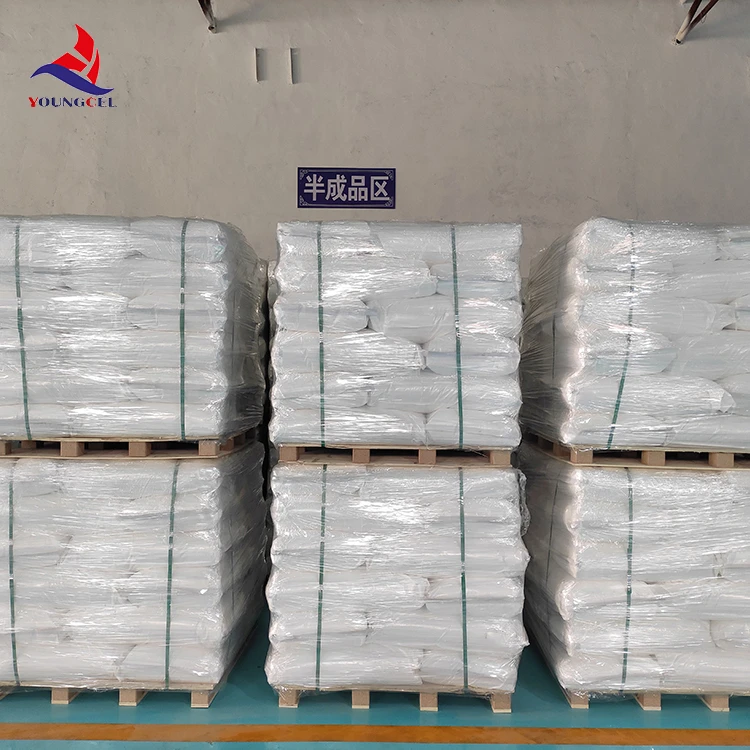Understanding Cellulose Ether Focus on Hydroxyethyl Methyl Cellulose (HEMC)
Cellulose ethers are a unique class of polymers derived from cellulose, a natural polymer found in the cell walls of plants. Among various types of cellulose ethers, Hydroxyethyl Methyl Cellulose (HEMC) stands out due to its versatile properties and wide range of applications. HEMC is produced by the etherification of cellulose with methyl and hydroxyethyl groups, which alters the solubility and functionality of cellulose, making it an indispensable ingredient in several industries.
One of the most notable characteristics of HEMC is its exceptional water solubility. When HEMC is mixed with water, it forms a clear, viscous solution that can be easily handled and applied. This property is particularly useful in formulations requiring thickening agents. The viscosity of HEMC can be modified by adjusting the degree of substitution of the methyl and hydroxyethyl groups, enabling manufacturers to tailor products to meet specific performance criteria.
Understanding Cellulose Ether Focus on Hydroxyethyl Methyl Cellulose (HEMC)
In the field of pharmaceuticals, HEMC plays a significant role as a binder and coating agent in tablet formulations. Its film-forming capabilities contribute to controlled release profiles, vital for ensuring that active pharmaceutical ingredients are delivered effectively within the body. Additionally, HEMC is often used in topical applications, providing a smooth and even distribution of active ingredients while offering a pleasant texture to the final product.
cellulose ether hemc

The cosmetic industry also benefits from the properties of HEMC. As a thickening agent and emulsifier, it helps stabilize formulations by preventing the separation of oil and water phases. Moreover, its ability to retain moisture enhances the moisturizing properties of skin care products, making HEMC a popular ingredient in creams, lotions, and gels.
Another area where HEMC has shown considerable promise is in the food industry. It is utilized as a food thickener, stabilizer, and emulsifier, contributing to the texture and consistency of various food products. Its approval as a food additive in many countries further encourages its use in the formulation of gluten-free products, where it helps improve texture and moisture retention.
While HEMC is widely recognized for its benefits, it is essential to consider the environmental impact of its production and use. As a derivative of cellulose, its sourcing from renewable plant materials is inherently more sustainable compared to many synthetic polymers. However, the manufacturing processes must be managed responsibly to minimize ecological footprints. Sustainable practices in sourcing raw materials and ensuring non-toxic additives in formulations are critical moving forward.
In conclusion, Hydroxyethyl Methyl Cellulose (HEMC) exemplifies the versatility and utility of cellulose ethers across multiple sectors. Its water solubility, thickening, binding, and stabilizing properties make it an essential ingredient in construction, pharmaceuticals, cosmetics, and food. As industries continue to seek effective and sustainable solutions, HEMC remains a relevant and valuable material worth exploring, thanks to its multifaceted capabilities and environmentally considerate origins. Understanding HEMC's role not only highlights the importance of cellulose ethers but also emphasizes the need for innovation that emphasizes sustainability and performance.
-
The Application and Significance of Construction RdpNewsMay.19,2025
-
Industrial Grade HpmcNewsMay.19,2025
-
Building Coating Adhesive Building Coating Adhesive HpmcNewsMay.19,2025
-
Application Of Hpmc For Detergent For Detergent In DetergentsNewsMay.19,2025
-
Application Of Hpmc Cellulose In Cement-Based MaterialsNewsMay.19,2025
-
Application Of High Quality Hpmc For Construction In The Field Of ConstructionNewsMay.19,2025




